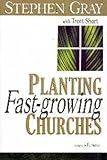What's the difference?
Here's a list of the 21 differences between church plants that grow fast and those that struggle.
- Assessment: Using the Ridley Assessment is a must! The higher the score the better.
- Finances: Adequate financial support is a necessity. There is a delicate balance between too much and too little support.
- Full-time Planters: A majority of fast-growing church plants were led by full-time planters.
- Shorter Support Period: An extended period of support is not good for a new church — recommend less than two years.
- Give Additional Funding: A higher percentage of fast-growing churches received additional funding beyond the initial salary given.
- Limit Additional Funding: Most growing church plants received less than $50,000 additional funding within a one-year time frame.
- Planters Add Funding: Planters need to be responsible for raising a portion of their support.
- Vision Ownership: The vision for the church plant should be birthed in the heart of the individual planting the church.
- Audience Determination: The church planter should have the freedom to choose the target audience they want to reach.
- Financial Decisions: Planters of fast-growing churches were given freedom to spend their funding as they saw fit.
- Release Control: Sponsoring agencies need to give freedom to the church planter.
- Support Emotionally: Adequate emotional support for the planter is vital.
- Adequate Training: Church planters should receive more than one week of specialized training.
- Staff at Start-up: Planting a church with a team is a must! Don't send a lone ranger to plant a church.
- Launch Team Size: A minimum of 40 people should be involved on the start-up team prior to launch—or wait!
- Ministry Opportunities: Fast-growing churches had at least three ministries in place at time of public launch: worship, children, and youth.
- Gathering Activities: Preview services and small groups should be utilized to build the start-up team prior to launch.
- Preview Services: Preview or “practice†services should be on a bi-weekly basis for at least three months prior to a public opening.
- Large Birth Weight: Do everything within your power to get at least 100 people to your public opening.
- Stewardship Training: Start teaching stewardship within the first six months. Don't be overbearing, don't whine, and don't be secretive about your finances; instead, be transparent.
- External Focus: Fight like mad to keep your ministry focus outward.
HT: Dave DeVries

